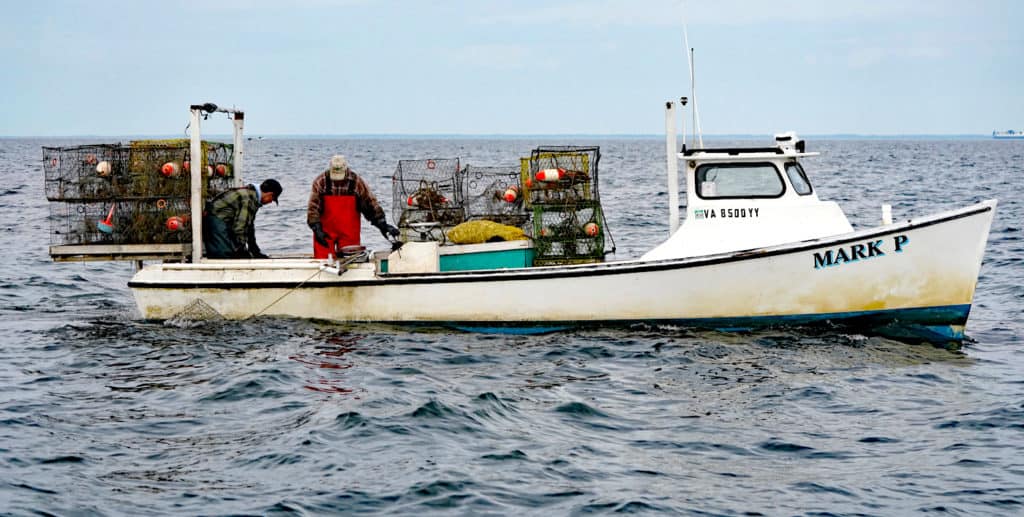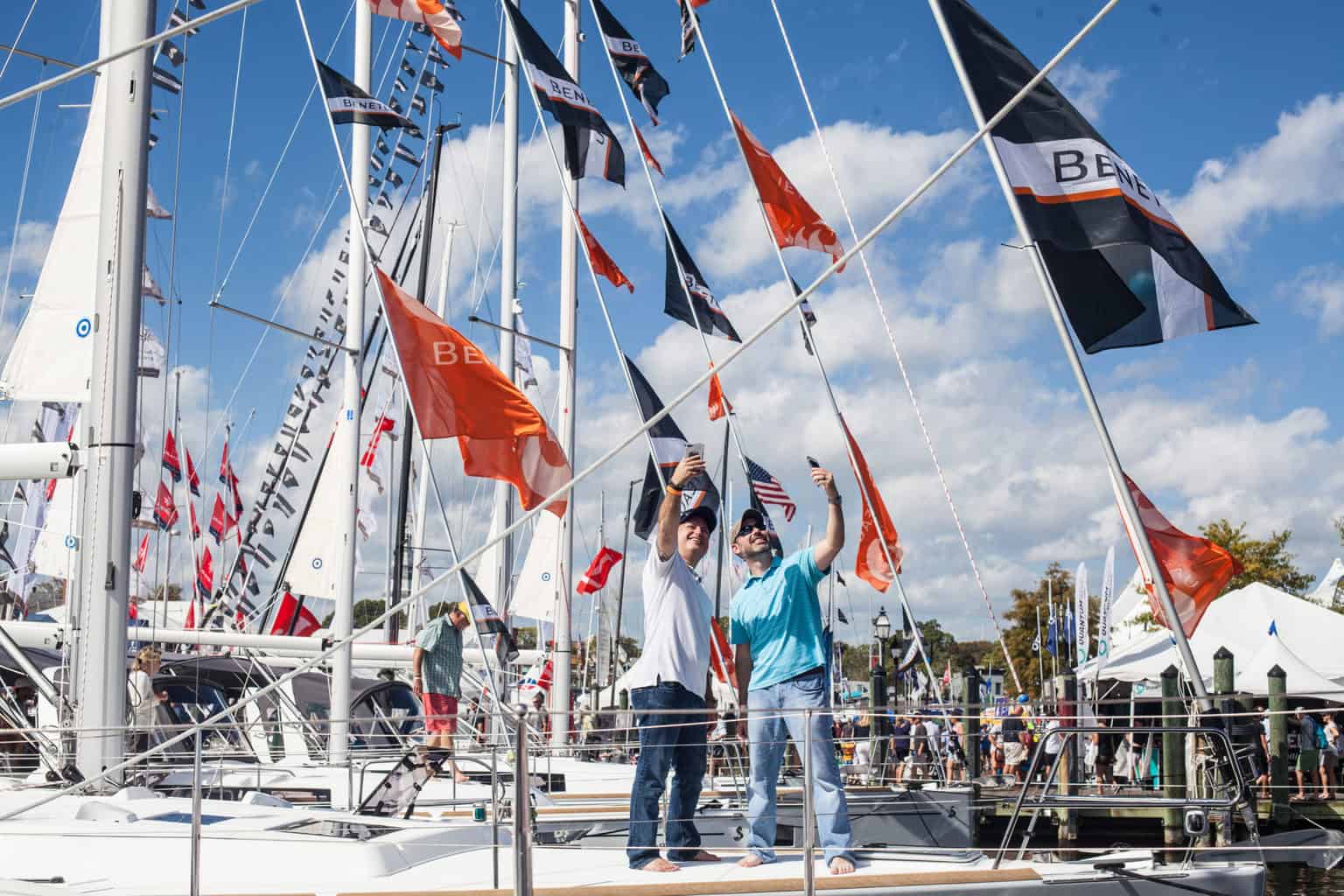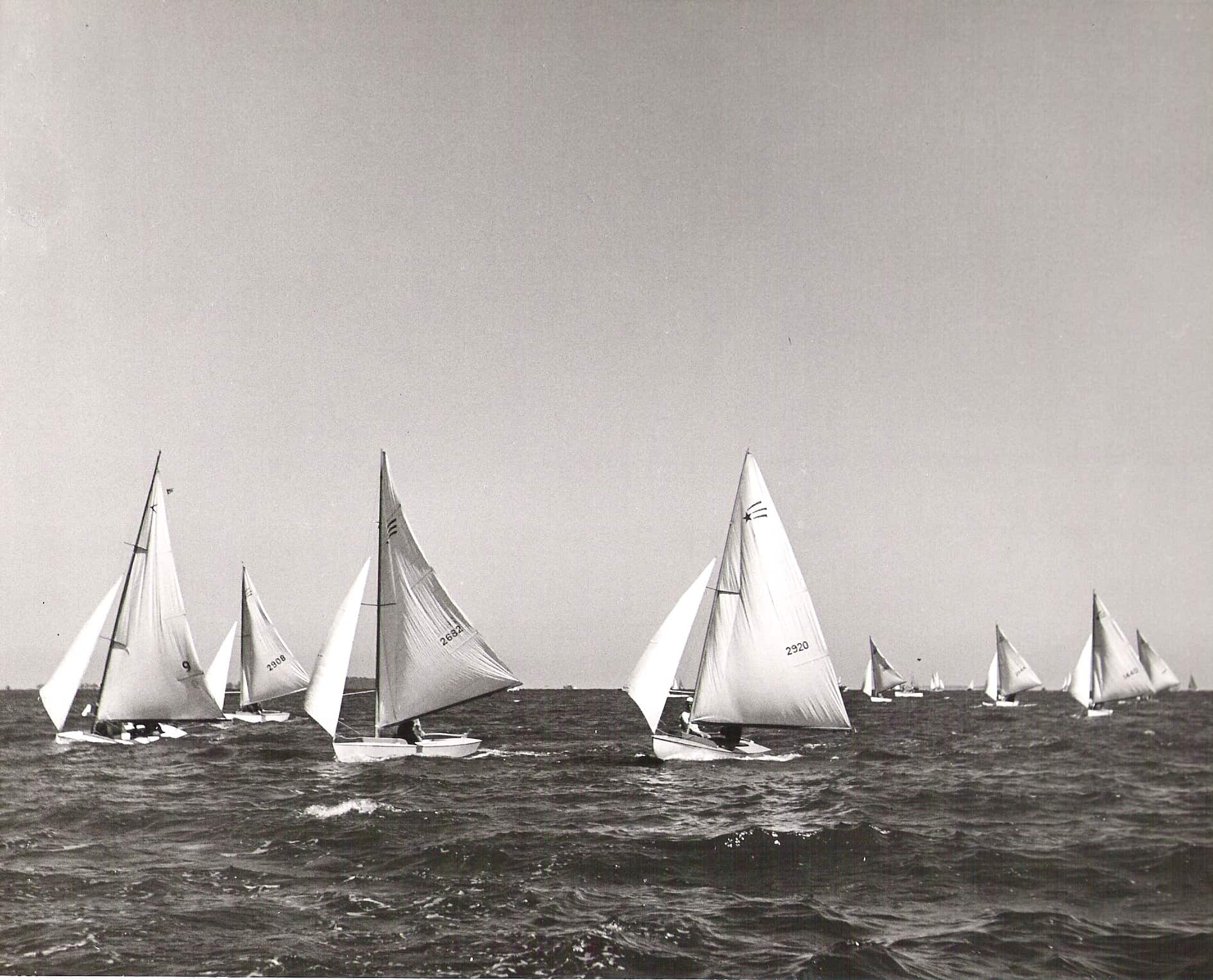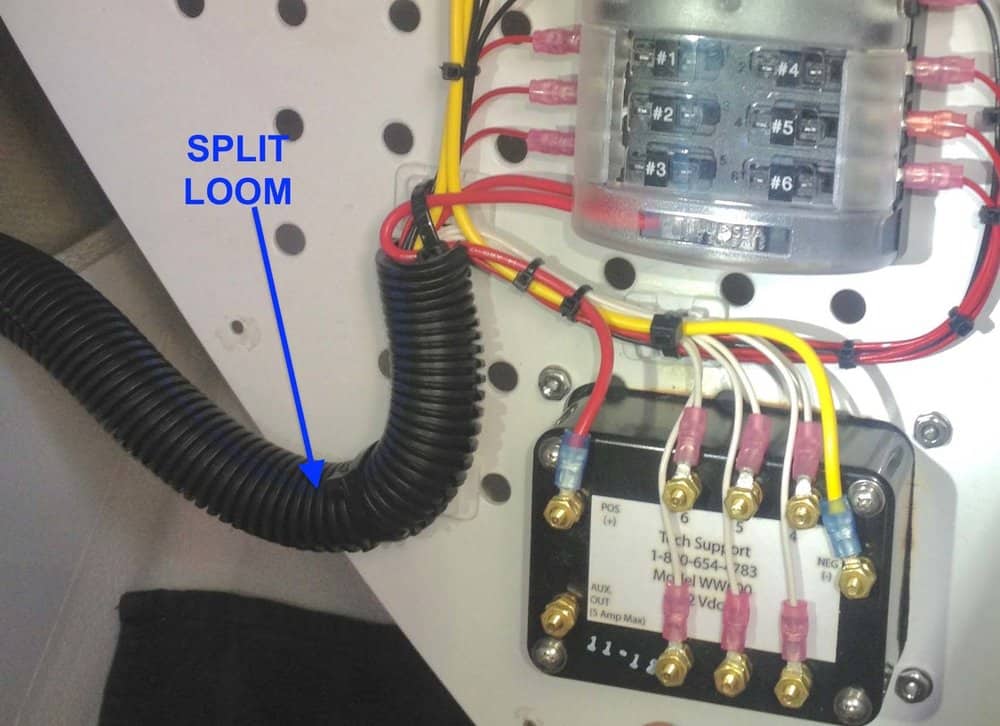Skipjacks get the glory, but the deadrise gets the job done
By John Page Williams
The Chesapeake deadrise is a purpose-built powerboat designed to meet the challenges of working the Bay. Its basic design evolved over about 140 years of hard work at multiple tasks under varying conditions on our wide-open, shallow, and choppy Chesapeake Bay.
From a design perspective, a boat’s deadrise refers to a line rising upward from the keel to the chine, which determines the V shape of the bottom of the hull. The angle of deadrise is normally measured at the transom even though the angle will usually vary toward the bow where it gets sharper to meet the waves. Old-time builders sometimes expressed deadrise in inches, but today it is more commonly measured in degrees. Most deadrises, like their sailing predecessors, the skipjacks, have five to 10 degrees of deadrise, while a modern, high-speed powerboat might have as much as 24 degrees. Traditional deadrise hulls were built with cross-planked bottoms meeting horizontally planked sides.
A century ago, the aim of the basic workboat design was to provide enough “V” to cleave the Bay’s choppy water while offering ample stability for working dredges, nets, and pots in shallow water. That basic formula also serves the needs of charter and recreational fishing and general family use on the Bay. The designs also exhibit a functional beauty, with high bows to address the spray and low sides for reaching down to the water. Hence the deadrise boats’ enduring popularity.
Chesapeake maritime history, especially as detailed by the late Smithsonian historian Howard I. Chapelle, indicates that the boats began evolving in the 1890s from three threads, schooners and planked bugeyes, log canoes, and flat-bottomed skiffs with cross-planked bottoms. The first group’s larger boats were becoming less profitable as deep-water oyster stocks began to wane from the peak years of the 1880s. For the second group, a growing scarcity of large trees made log canoe construction ever more difficult, while steam-powered sawmills made milled planks available for boatbuilding. The flat-bottom skiffs of the time were useful enough in calm weather, but they rode hard in a blow. Watermen needed a 30- to 50-foot boats with sail power to pull heavy dredges, seaworthiness to handle heavy winter weather but still move in light air, a sharp bow to soften the impact through choppy water, and a shallow draft to work close to shore.
The problem with traditional construction on the schooners and bugeyes was the building of complex frames to provide fastening bases for long fore-and-aft planks on rounded bottoms. A few builders experimented with a new class of bateaux (The name perhaps derived from Huguenot builders on the lower Eastern Shore) by building the boats upside-down, laying the keel (usually yellow pine) on a jig shaped to define the hull shape, fastening the stem and transom to it, and cutting a rabbet (groove) along each side of the keel to receive the cross planks. On the jig, they ran thick chine planks from transom to stem to anchor the corners where the bottom would meet the topsides. The keel therefore sat higher than the chine logs, so when the builder laid the short bottom planks they ran only from the chine to the rabbet on the keel on each side instead of all the way across, as on flat-bottom skiffs. The result was a shallow V-bottom.
Once the bottom of the hull was complete, the builder turned the boat over. The turning process was always an exercise in ingenuity, leverage, and community effort. It was the reason that many early builders set up under big trees with stout branches from which they would hang block-and-tackle rigs, while family members and neighbors pitched in to help. Once the boat was upright, the builder cradled and leveled it to finish the topsides.
With this system, the only frames required were straight ones (usually white oak) notched to fit at regular intervals onto the chine logs and bolted there. Depending on the way the chine logs were shaped, the frames would sit vertically or flare out to the side. The builder fastened the planking lengthwise onto them from the transom to a rabbet cut into each side of the stem. This system was simpler, faster, and more economical than the old fore-and-aft techniques. Early bateaux had fairly flat bottoms, but gradually, the builders sharpened the deadrise angles, as documented by Chapelle. Small 20- to 30-foot boats worked crab trotlines. Slightly larger ones pulled hand-scrapes (small oyster dredges retrieved by hand), while boats in the 38- to 50-foot range pulled full-sized dredges and retrieved them with hand-cranked mechanical winders mounted on deck.
The ideal bateau of this era would be fast under sail, powerful in pulling a dredge, easy to control with reefs in the mainsail and jib, rock-stable as a work platform, and able to carry several hundred bushels of oysters and maybe produce in the offseason. Of course, that ideal bateau never existed, but the builders constantly strove for it, producing a range of compromises in length, beam, and shape to get various jobs done. It’s significant that some of the fastest of these boats are still on the water today, sailing in races like the Labor Day classic at Deal Island before going to work “drudging” in the fall and winter. They gained the name skipjack instead of bateau in the 1920s.
The advent of internal combustion engines around 1900 raised new possibilities, not the least to power the skipjacks’ mechanical dredge winders. Experiments with hull shapes ensued, beginning with narrow, double-ended deadrise hulls that placed the engines well-aft and mounted outside rudders with tillers. The early marine engines were “one-lungers”, single-cylinder models of three- to 10-hp that propelled the boats at about six knots. As larger engines became available, especially the four-cylinder Ford Model T, the builders mounted them further forward to improve balance, but the increased power caused the narrow, double-ended hulls to drive harder into their bow waves, causing their sterns to squat and hinder speed.
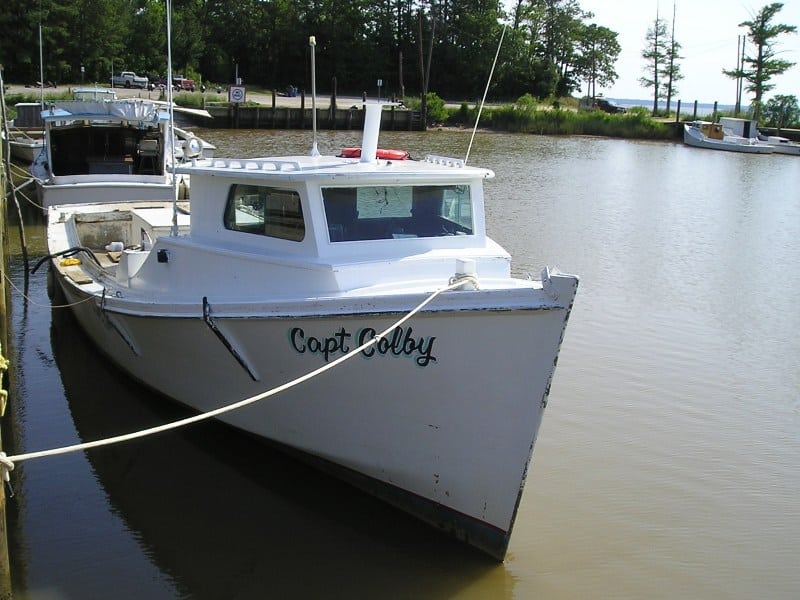
As larger four-cylinder and six-cylinder automotive engines were developed, mechanics adapted them for marine use, and boatbuilders experimented with wider hulls and transom configurations to resist squatting. Boats of the 1930s and 40s were narrower than more recent models, and rounded sterns provided lift to achieve speeds of eight to 10 knots. During this period, Hoopers Islanders began building draketail (reverse-sheer) transoms, imitating the naval destroyers that they saw going up the Bay. Some experimented with even larger engines, sometimes for nefarious purposes like illegal night-dredging for oysters. There was a story around Colonial Beach of a young man with a draketail powered by a 1930s Lincoln V-12 who disappeared from the marine police while flying downriver on a dark night. He was never heard from again. The boats of that era weren’t built for that kind of power. A more reasonable workhorse engine of the ‘50s and ‘60s was the six-cylinder Chrysler Crown, which produced 80- to 110-hp and drove round-stern boats well.
The late 1950s brought V-8 gasoline engines, and in the 1960s, powerful four- and six-cylinder General Motors diesels, which forced builders to add “squat-board” extensions or wedges at the transoms of their round-stern boats. Gradually they began to achieve the lift that allowed the hulls to rise in the water as they ran, increasing their speed. Lighter recreational inboard and outboard boats were planing, skimming over the surface at speeds in the ‘teens and twenties, with squared sterns that provided more surface area for lift over the hulls’ bow waves. Deadrise builders, therefore, began experimenting with similar box sterns. The challenge was how to shape the bottom to accommodate a larger propeller while retaining the shallow draft so necessary in the Chesapeake. The solution, originally developed by builders on the Guinea Peninsula in Gloucester County, was a one-piece horn timber, a stout S-shaped piece of wood that connected the aft end of the keel to the transom, carrying the engine’s shaft to the propeller. The shape became known as the Deltaville Hump.
For the second half of the twentieth century, builders up and down the Chesapeake, from Rock Hall, Shady Side, Oxford, Hooper’s Island, Wingate, Smith Island’s Rhodes Point, Crisfield, Tangier, Mathews, Deep Creek, and Rescue developed shapes to suit the owners’ needs, whether crab potting, oystering with patent tongs, carrying fishing parties, or cruising for pleasure. Boats built by Jerry Frank Pruitt on Tangier and Grover Lee Owens in Deltaville were fine in shape forward, with high bows, small pilothouses, and huge open cockpits with low sides, built to “sail easy” at 18 to 20 knots. Boats from Hooper’s Island and Rock Hall had flared topsides curving elegantly upward and outward to knock down the chop. Hulls built for charter fishing and cruising tended to be fuller forward, to allow for forward bunks, an enclosed head, and a pilothouse large enough to seat half-a-dozen passengers and crew out of the weather.
One of the classic builders is Cecil Robbins of Drawbridge, MD, who as late as the early ‘80s shaped his keels with a broadaxe and adze and strip-planked his hulls and topsides to achieve a distinctive flared shape.
Inevitably, experimentation led to fiberglass construction, but the deadrise V-hull developed over a century of research and development endures. While very few traditional wooden deadrise builders remain, modern composite builders are turning out deadrise-style boats for a variety of uses. Robbins worked with fiberglass pioneer Glen Manning to develop molds of two of his best boats and shifted completely to fiberglass before selling his tooling to Mathews Brothers Boats in 1999. Bill Judge in Denton has assembled tooling for several deadrise hulls of 22- to 42- feet. The late Robert Meekins, a gifted designer/builder from Golden Hill, near Hooper’s Island, built multiple wooden boats but is best remembered for the Markley 46, a favored charter and recreational deadrise hull built today by Composite Yacht in Trappe. Meekins also designed versatile 18- to 29-foot fiberglass outboard hulls for North Carolina-based builders—C-Hawk and May-Craft. Dave Mason at Chesapeake Boats in Crisfield builds deadrise boats as one-off custom boats or molded fiberglass versions from tooling he has built or acquired over the years. Until last year, Eugene Evans and his family in Crisfield built fiberglass deadrise boats. The company has shifted to maintenance and restoration work and the molds have gone to other shops. Hulls Unlimited-East in Deltaville produced dozens of lovely 32- to 46-foot deadrises that are still running even though the company closed twenty years ago.
Early Chesapeake boat-builders looking down on us from their heavenly boat shops must grumble, “If God had meant us to have fiberglass boats, He’d have planted fiberglass trees.” They may chuckle at the idea of evolutionary deadrise hulls boats based on their work running around with multiple 350-hp outboard engines, and they know that the Bay’s waves and ways have not changed. They know what the deadrise hull can do.
CBM Editor at Large John Page Williams is a fishing guide, educator, author, and naturalist, saving the Bay since 1973. In 2013, at the urging of CBM’s current editor-in-chief, the state of Maryland proclaimed Williams to be an Admiral of the Bay.

